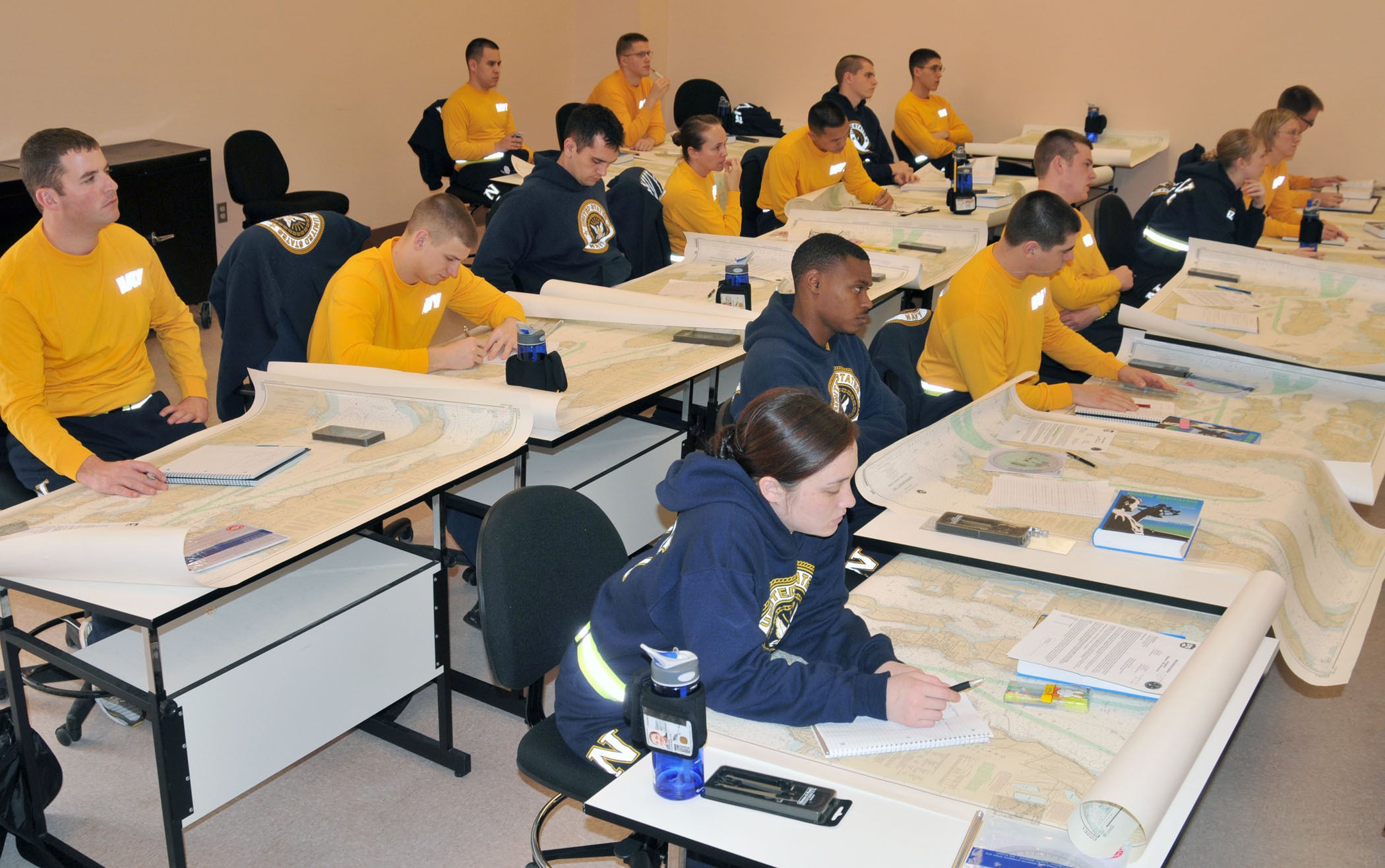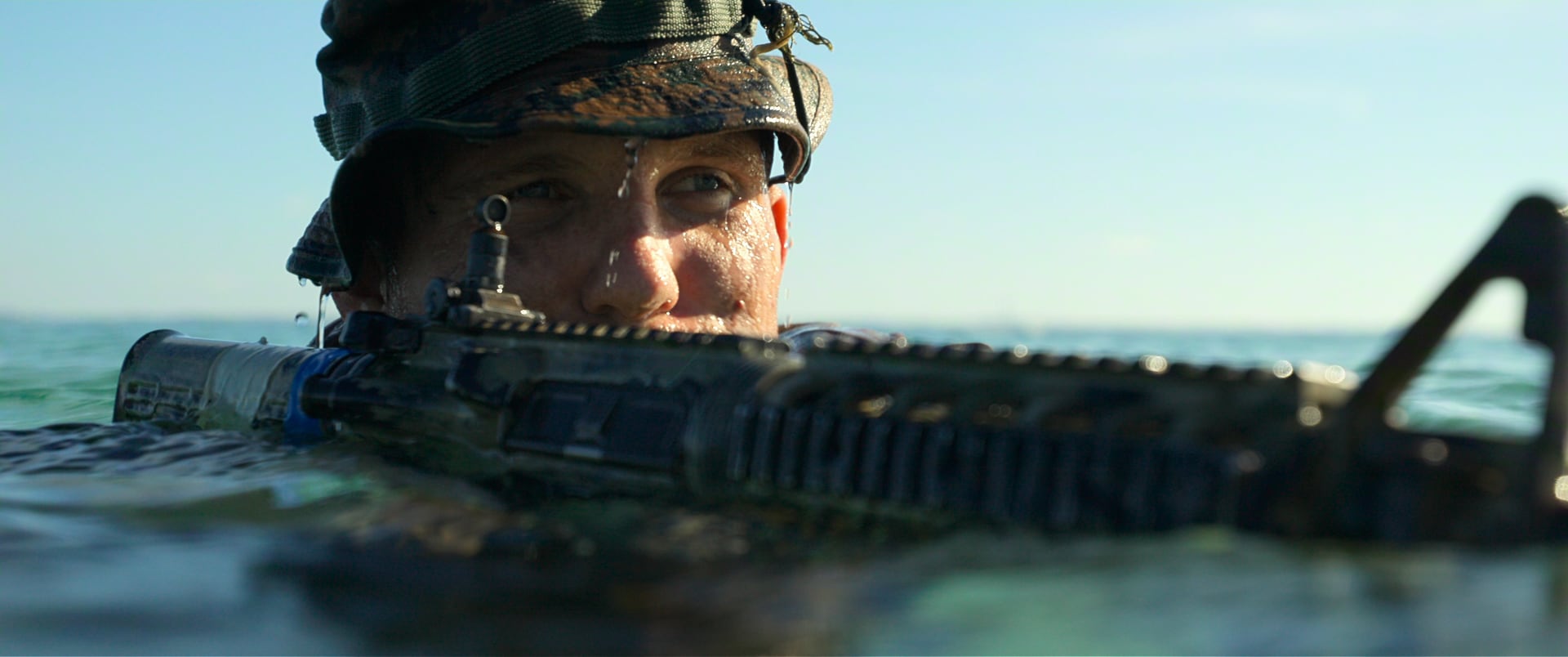Julie Wiseman wants to command destroyers.
The problem is, that's not usually something an aviation boatswain's mate (aircraft handling) gets to do in the course of a career.
So with eight years in the Navy, she decided to make a change and swap her yellow flight-deck jersey for shipboard coveralls.
But Her route to the wardroom started with an application to the Seaman to Admiral program two years ago. On Dec. 15, she'll graduate from Iowa State University and get her ensign's bars and a wardroom seat at the wardroom table as one of the Navy's newest surface warfare officers.
"I'm really excited to get out to the fleet as a surface warfare officer," she said in an April 2 interview with Navy Times. "I knew once I joined the Navy that I would be a career sailor and decided to take advantage [of the] opportunity the Navy has to get a commission and see how far I could go."
With selectees collecting their full paycheck and money to pay for school, the Seaman to Admiral program is one of the Navy's best deals for those with some college experience already who are looking to make the Navy a career. And they're again soliciting applications for the next crop of future leaders.
And if you've got some college under your and think you've got what it takes to be an officer, it's that time of the year again. The Navy is soliciting applications for the fiscal 2016 Admiral program.
This year's board will meet in September and initial applications must arrive or be postmarked by July 1 to be considered.
STA-21 (as in 21st century) is just one of several routes from the deck plates to the wardroom. Other routes include the chief warrant and limited duty officer programs, the Medical Service Corps in-service procurement corps, Reserve Officers' Training Corps, Officer Candidate School and, of course, the Naval Academy.
Each have their own requirements, and all commissioning programs are competitive to get into, officials say. STA-21 is no exception. In each of the last three years, the service has only allowed 50 sailors into STA-21 the program each year, that's down from a high of 226 picked up for the program in fiscal year 2010.
Though applications are due in July, the board — which meets in Pensacola, Fla. — won't be held until September.
"Yes, this is a highly competitive program," said Cathy Kempf, head of selection and placement for the Navaly Service Training Command. "Not all applications actually make it to the board, as our staff scrubs each to ensure the sailor is eligible to be considered."
Getting a spot
In fact, Over the past three years, 1,565 applications STA-21 applications were submitted to NSTC and, after the initial scrub, 1,216 of those made it in front of the board. With only 150 quotas available, that means an average of 12.335 percent have been selected by the board during that time.
The biggest hurdle to get to the board is college test scores, Kemp said one of the major reasons sailors applications don't get to the board is college test scores. Applicants for most designators must have a minimum SAT test scores of 500 in their math and 500 in critical reading. For the ACT test, that translates to a 21 in math and 20 in English. For those applying for the nuclear option, it's a combined SAT score of 1,140 or combined math and english ACT score of 50.
"The test scores aren't waiverable," Kempf said. "Sailors need to realize they can retest and shouldn't submit unless their scores meet the minimums as their packages won't be considered."
But though Baseline scores are required to make the board, but high scores alone are not guarantee of selection. The board as the board also factors in weighs looks at a sailor's evaluations and previous college experience because the program requires they finish their degree and be commissioned within 36 months of entering the program. Fitness counts, too, as applicants can't have below an overall "good" score on their semi-annual fitness assessment over the past three cycles.

More than 70 petty officers and chief petty officers work on navigation charts during a Seaman to Admiral and Naval Science Institute class at Officer Training Command. The sailors are going through the eight-week course of intense officer preparation and indoctrination.
Photo Credit: Scott Thornbloom/Navy
Wiseman, by her own admission, had only average college entrance test scores. She believes her record as a first class ABH and the fact she completed an associate's degree before applying helped get her selected.
"I took some afloat college courses while on deployment on the [carrier] Enterprise," she said. "But the bulk of my associate's degree I finished by pushing hard while on shore duty — even with working full time, I was able to complete it in two and a half years."
Kempf says the board considers any college course completed with a grade of C or above to be transferable credit. "Any D's and F's won't count," she said.
Another sticking point is a sailor's age, Kempf said. Most programs have an age deadline by which a sailor must be commissioned by, though for prior service sailors, some age requirements can be lifted with a waiver. are waiverable.
Sailors can apply for specific officer communities, but applying for only one severely limits their chances for selection, Kempf said.
"If just getting [a] commission is your goal and you are flexible as to what community you go into, you can elect our 'core' option," she said. "You are not assigned to a community up front, but you compete for unrestricted line designators of pilot, [naval flight officer], submarine or surface warfare as well as EOD and SEALs."
Along with the general core option, applications for the fiscal year '16 program are being accepted for taken in surface warfare; information professional; nuclear power, Special Warfare; explosive ordnance disposal, naval flight officer; pilot; civil engineering corps; nurse corps; and oceanography.
Sailors also select which school they want to attend, provided it has a Naval ROTCeserve Officer Training Corps affiliation. During the application process, they're required to pick three such schools, but officials say tell Navy Times sailors usually get their first choice of school.
STA-21 sailors attend school year-round until they complete their degree. To pay for school, they get an annual $10,000 a year voucher from the Navy for tuition and book costs. Militarily they're assigned to the NROTC unit, though they don't go on summer cruises like other midshipmen. the regular midshipmen of the year-round attendance requirement.
"Sailors, anyone with time on active-duty, are leaned on quite a bit by the midshipmen in the regular ROTC program," Kempf said. "It's a great chance to exercise your leadership and mentoring skills and pass along your knowledge and experience from the fleet to the Navy's future officers."
Sailors collect the pay and allowances at the pay grade they held when selected — and are eligible to continue to compete for enlisted advancement while in school. full-time military with their usual medical and other benefits.
More information and application procedures is available at http://www.sta-21.navy.mil.
Mark D. Faram is a former reporter for Navy Times. He was a senior writer covering personnel, cultural and historical issues. A nine-year active duty Navy veteran, Faram served from 1978 to 1987 as a Navy Diver and photographer.





